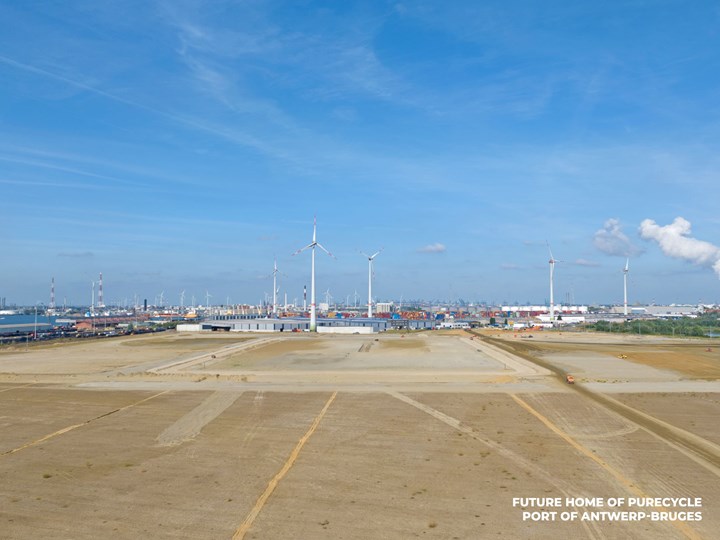PureCycle to Build Recycling Plant in Belgium
Company plans international expansion of PP recycling operations.
has announced it intends to build a PP recycling plant in the Nextgen district of the Port of Antwerp-Bruges. The Belgian site will be PureCycle’s first recycling facility in Europe.

Site for the future PureCycle facility at the Port of Antwerp-Bruges.
Photo: PureCycle
PureCycle’s solvent-based process removes impurities from PP waste, yielding a product that can be recycled multiple times. While many material recovery facilities now collect PP, the overall recycling rate remains low.
Construction is projected to begin in 2024, when the permitting process is expected to be complete. Capacity for the new plant is will be 130 million lb/yr to start, with space available to expand to 500 million lb/yr with the construction of additional lines.
PureCycle previously announced its plan to expand into Asia, by opening a facility in Ulsan, South Korea. The company also has a plant nearing completion in Ironton, Ohio, which is expected to begin production in the first quarter this year.
The Port of Antwerp-Bruges is Europe’s second-largest port by cargo tonnage. Its Nextgen district is a former GM site that the port has set aside for 大象传媒es investing in the circular economy and sustainable solutions.
“Being in the NextGen District will enable us to capitalize on existing efficiencies, collaborate with other innovators in the space and forge new partnerships," says Wiebe Schipper, v.p. of European operations at PureCycle.
Related Content
-
Fundamentals of Polyethylene – Part 3: Field Failures
Polyethylene parts can fail when an inappropriate density is selected. Let’s look at some examples and examine what happened and why.
-
How Compression Ratio Impacts Extruder Performance
Let’s investigate how compression ratio affects performance of an extruder processing LLDPE.
-
Flexible-Film Processor Optimizes All-PE Food Packaging
Tobe Packaging’s breakthrough was to create its Ecolefin PE multilayer film that could be applied with a specialized barrier coating.





